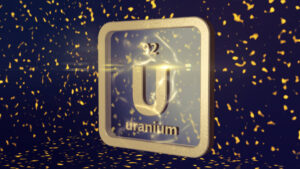Moab expands Manyoni to encompass the larger historical uranium project area

More uranium as Moab consolidates the historical Manyoni deposits under its umbrella. Pic: Getty Images
- Moab consolidates historical Manyoni uranium deposits for the first time in more than a decade
- Licences acquired from AuKing host three historic uranium resources under the older JORC 2004 standard
- Drilling underway to verify historical data, define JORC 2012 compliant resource
Special Report: All of the historical Manyoni uranium deposits are now in the same hands for the first time in over a decade after Moab Minerals acquired four licences adjacent to its existing Manyoni project in Tanzania.
The prospecting licences covering 488km² were acquired from fellow Australian AuKing (ASX:AKN) for $175,000 and cover parts of the historical Manyoni uranium project that were held by Uranex before 2013.
Moab Minerals (ASX:MOM) is currently conducting a 105-hole core drilling program at the project to verify historical data and allow for the definition of a JORC 2012 compliant resource.
Manyoni was previously explored and extensively drilled by Uranex from the early 2000s until 2013, yet stalled due to depressed uranium prices post the Fukushima incident.
It’s just 5km north of Manyoni town, giving it ready access to modern railway and sealed highway infrastructure, as well as readily available power and water resources.
The core drilling will be followed by a Stage Two program of 100 exploration core holes though the company has flagged a potential expansion of the Stage One core drilling to cover the new tenements.
“The acquisition of these additional surrounding tenements, which contain three uranium Mineral Resources known as E, F and G, estimated by Uranex resources in 2010 as part of Uranex’s Manyoni Uranium Project, adds significant upside potential to Manyoni,” managing director Malcolm Day said.
“We’ll now look at expanding the current drill program to evaluate the resource potential of these new tenements”.

New licences
The new licences cover the E, F and G resources, three of the six resource areas that Uranex had previously identified.
While these resources may not conform to the current JORC 2012 standards, the company said it was confident the resource is accurate as it has access to the historical databases and mineral resource report produced by Hellman & Schofield.
However, to ensure the validity of data, MOM has been advised to twin an estimated 100 holes to an average depth of 15m to address assay reliability.
It will also carry out bench scale metallurgical testing on a representative suite of bulk samples from the drilling and carry out additional bulk density measurements.
Other work that might be carried out includes infill drilling to upgrade resources to the higher confidence Indicated category.
Exploration drilling
MOM is also planning to carry out exploration drilling to locate extensions to the known mineralisation.
This will be aided by ground geophysical surveys designed to locate buried alluvial channels and concealed faults, which are believed to control the high-grade uranium mineralisation.
It has already acquired high quality airborne geophysical data sets from the Geological Survey of Tanzania, which will assist exploration targeting.
This article was developed in collaboration with Moab Minerals, a Stockhead advertiser at the time of publishing.
This article does not constitute financial product advice. You should consider obtaining independent advice before making any financial decisions.
Related Topics

UNLOCK INSIGHTS
Discover the untold stories of emerging ASX stocks.
Daily news and expert analysis, it's free to subscribe.
By proceeding, you confirm you understand that we handle personal information in accordance with our Privacy Policy.








